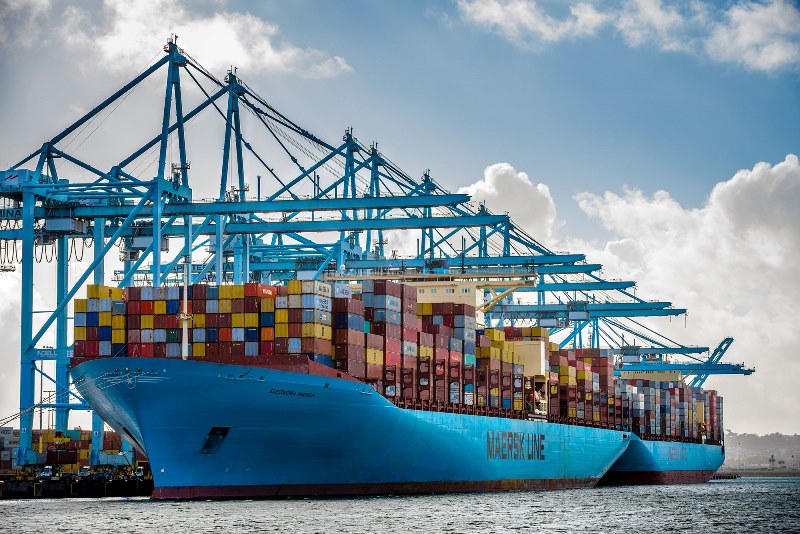Bill Of Lading As A Document Of Title

In modern international trade and shipping, this is probably the most important characteristic of the bill of lading.
A “document of title” is a document that enables the holder (the person who “possesses” it) to deal with the goods described in it as if he was the owner.
“Title” is the right to ownership. “Ownership” can be explained as the right of using, altering, disposing of (that is, selling) and destroying the goods.
This “ownership” or “title” can be transferred by a formal transfer of the document, such transfer being an “endorsement” and/or delivery of the document itself.
While the goods are in transit from the shipper, for example, when the cargo is at seas they cannot be physically delivered to the buyer or person entitled to have the goods.
“During this period of transit and voyage the bill of lading.. . is universally recognised as its symbol and the endorsement and delivery of the bill of lading operates as a symbolic delivery of the cargo.
Property in the goods passes by such endorsement and delivery of the bill of lading whenever it is the intention of the parties that the property should pass, just as under similar circumstances the property would pass by an actual delivery of the goods . . .” (Sanders v. Maclean, 1883).
The “parties” include the seller and buyer of the goods and “property” is that thing which is capable of “ownership”.
The goods can therefore be bought and sold while they are in transit at sea. This passes the property in the goods and also the right to possession when the vessel arrives at the port of delivery.
The right to possession is exercised by the holder presenting the document and claiming the goods. Problems can arise if the claimant does not have the document, perhaps because it is delayed through the documentary credit system.
If the “property” can “pass” by indorsing and/or delivering the document, this is as if ownership is being transferred or assigned. The bill of lading may sometimes be called a “negotiable” document but the word “negotiable” is connected with “negotiable instruments” which deal with the rights to money, fox example, a cheque.
The transferability of the bill of lading gives its transferee/ holder rights to goods and a transfer of rights is an “assignment”.
The transfer of title to the goods depends on the terms in the contract of sale and the title is transferred (“property passes”) when the parties intend it to pass. Such transfer can be by the endorsement of the bill of lading by its holder.
If the bill of lading requires the carrier to deliver the goods to the order of a person, that is an “order bill of lading” and this would be transferable (or “negotiable”.) This type of bill of lading is a document of title.
If the bill of lading contains only the name of the person to whom the goods are to be delivered and delivery is not made subject to the order of a person, this is a “straight bill of lading” and is not negotiable or transferable.

Therefore it cannot be a “document of title”. A “non negotiable” document operates as a receipt for cargo and can also be the evidence of the contract of carriage. Such a non-negotiable document may actually be marked as such. The document can be called a “waybill”.
While the waybill may be suitable for purposes of evidencing the terms of the contract of carriage and also evidence that the goods were received by the Garner, the goods will be delivered to the person named in it on proof of his identity.
Waybills may be appropriate to avoid fraud or to cover the common situation where the goods may be sold before they are even shipped.
However, the document of title characteristic of the bill of lading may still be important if the goods are to be transacted while the goods are in transit and, in any case, when the transaction is financed through banks and the documentary credit system.
In this situation, the bank is providing finance to the buyer and this requires some form of security. The traditional bill of lading fulfils this requirement of security.
This is one reason why banks are very careful when making payment on the production of bills of lading and why they are governed by the terms of the “UCP 1983”.
When the bank is to make a payment, it will follow precisely the instructions of the buyer, contained in the original application for a documentary credit or just “credit”.
If the credit specifies a “shipped on-board bill of lading”, the bank is unlikely to accept a non-negotiable waybill or perhaps even a “combined transport document”.

What Information Is Included on a Bill of Lading?
A bill of lading (BOL) contains detailed information concerning cargo that is typically being shipped by plane, truck, boat or train.
The name of the shipper, as well as the name of the shipping agent, is often on the top of a bill of lading.
Other pertinent information includes such features as the number of pallets the load contains, the type of product that is being shipped and the estimated or exact value of the shipment.
Shipment details, such as the name of the company that is transporting the load, the date of shipment, and the trailer, ship or box car number that is carrying the shipment, are usually present on a bill of lading.
When a load of merchandise or freight leaves a warehouse or factory, the owner of the freight has one primary method for proving ownership and tracking the shipment of the product: the bill of lading.
This small document lists the specifics of the freight that is being shipped, such as the type of freight, the number of items and the shipper or owner of the freight.
The receiver of the freight is also represented on the bill of lading, along with the names of the individuals who loaded the freight and the name of the driver or the driver’s company that is moving the freight.
Insurance companies and other agencies must be able to properly track the many types of merchandise that are being shipped all around the world.
This task is made possible through the use of a bill of lading. The bill not only shows the exact time that the freight was loaded onto the shipping vehicle, it also documents exactly what time the freight was off-loaded and delivered.
The weight of the load, as well as the value of the load, are also documented for logistic and legal reasons.
Special delivery instructions, directions to the delivery address and a (BOL) message are also included on the bill of lading.
A BOL message gives specific instructions to the shipper of measures that need to be taken to be sure the freight arrives safely, such as items requiring refrigeration or delicate handling.
Comments also address other handling issues, such as strapping the boxes to the pallets to protect the load. There is also a specific location for the receiver and the shipper to describe any broken or damaged items if they are discovered in the load.
















